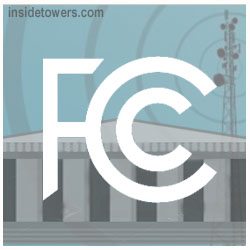UPDATE Thirteen conservative lobbying organizations pressed the FCC this week to open up the 5.9 GHz band for WiFi. General Motors, however, says it should remain dedicated to automotive safety.
Currently allocated for auto safety “Dedicated Short Range Communications” and designed to enable vehicle-to-vehicle applications, FCC Chairman Ajit Pai said in May, much of the band has remained fallow for 20 years and he wanted the agency to take a fresh look at its use.
Now, many in the automotive industry back Cellular Vehicle to Everything (C-V2X), which would use cellular protocols, such as 4G LTE, for direct communication between vehicles, and between cars and road infrastructure. Pai said at the time, potential choices for future use of the band include keeping it reserved for C-V2X or other car technologies; splitting the band between automotive and unlicensed use; or allocating the entire 75 MHz for unlicensed use.
Hogan Lovells law firm wrote in an update on the topic recently, that the automotive industry has been slow to invest in and develop products based on DSRC. Cellular providers and many automobile manufacturers have sought rule changes that would allow C-V2X operations in the band.
Toyota recently stopped plans to deploy 5.9 GHz DSRC because of the uncertain regulatory climate and the lack of adoption by other automotive companies, Inside Towers reported. Ford, meanwhile, recently said it plans to deploy cellular-based technologies for vehicle safety C-V2X technology in its cars beginning in 2020.
Proponents to open up the 5.9 GHz band for WiFi are pushing for access to the upper 20 MHz portion of the band to continue to test and develop these technologies.
The conservative groups mentioned above, including American Conservative Union, Tech Freedom and Lincoln Network, told the Commission that according to the Auto Alliance, automobile manufacturers spend more than $100 billion each year on research and development worldwide and are working on new safety and V2V communications technologies that do not rely on DSRC. They added that, “preserving spectrum for DSRC technology that is outdated and incompatible with current advanced safety technologies before it has been fully deployed is a waste of extremely valuable spectrum.”
General Motors told the FCC this week, DSRC, currently used by GM vehicles with V2V capability, “is the only fully developed solution.” The automaker says it also encourages widespread V2V deployment throughout the industry to promote safety. “The more vehicles that deploy a common connectivity technology like DSRC, the more crashes that potentially can be avoided and the more lives that can be saved,” writes GM.
While GM says the entire 5.9 GHz band should be preserved for auto safety, it believes C-V2X holds promise and should have temporary access to a portion of the 5.9 GHz band for testing. That’s why the automaker supports a petition for waiver from the 5G Automotive Association to allow temporary deployment of C-V2X in the upper portion of the 5.9 GHz band.
Hogan Lovell predicts a rulemaking on the reallocation of the 5.9 GHz band could come out of the agency this summer.
By Leslie Stimson, Inside Towers Washington Bureau Chief
June 20, 2019





Reader Interactions